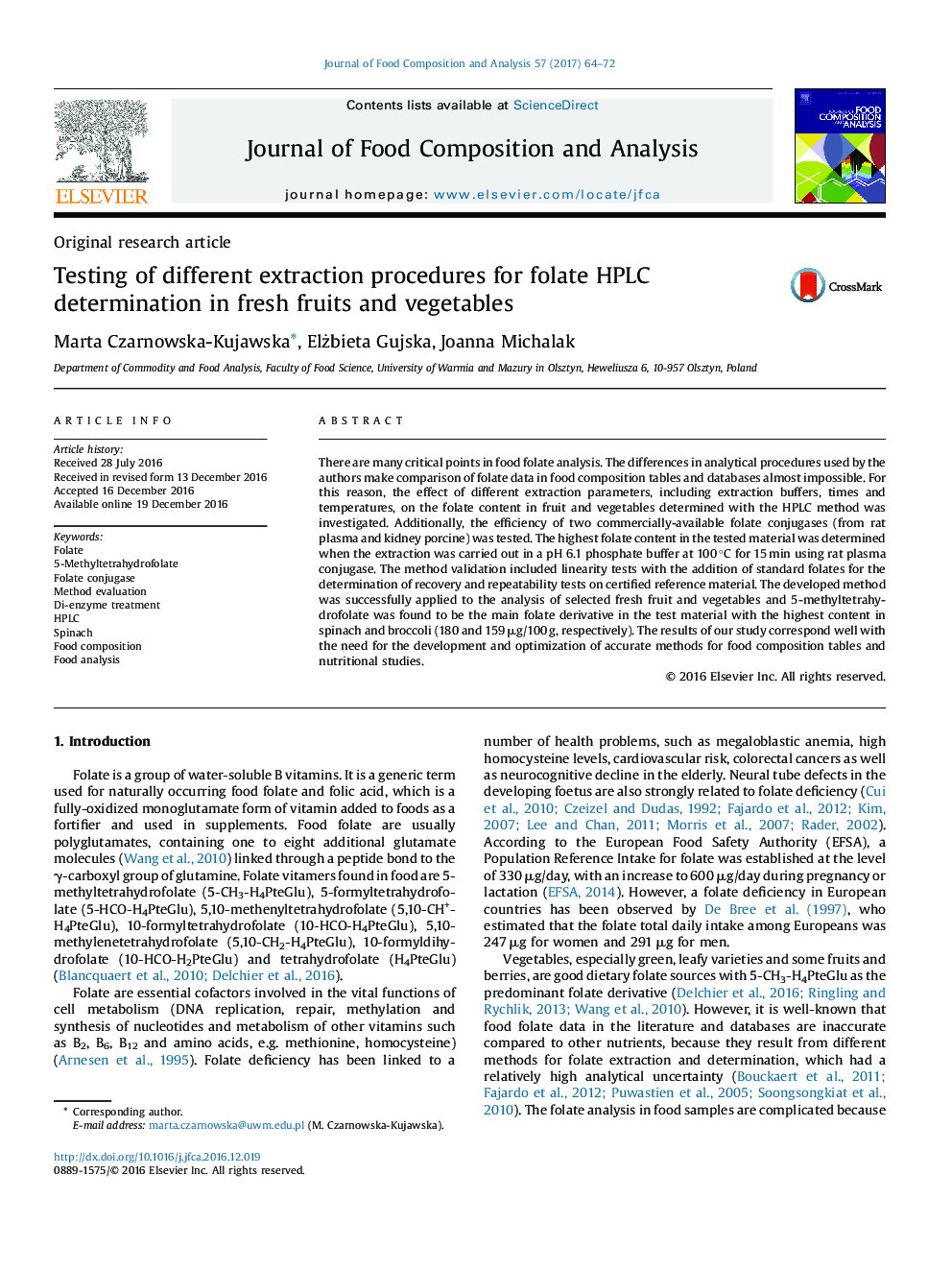| Article ID | Journal | Published Year | Pages | File Type |
|---|---|---|---|---|
| 5137005 | Journal of Food Composition and Analysis | 2017 | 9 Pages |
Abstract
There are many critical points in food folate analysis. The differences in analytical procedures used by the authors make comparison of folate data in food composition tables and databases almost impossible. For this reason, the effect of different extraction parameters, including extraction buffers, times and temperatures, on the folate content in fruit and vegetables determined with the HPLC method was investigated. Additionally, the efficiency of two commercially-available folate conjugases (from rat plasma and kidney porcine) was tested. The highest folate content in the tested material was determined when the extraction was carried out in a pH 6.1 phosphate buffer at 100 °C for 15 min using rat plasma conjugase. The method validation included linearity tests with the addition of standard folates for the determination of recovery and repeatability tests on certified reference material. The developed method was successfully applied to the analysis of selected fresh fruit and vegetables and 5-methyltetrahydrofolate was found to be the main folate derivative in the test material with the highest content in spinach and broccoli (180 and 159 μg/100 g, respectively). The results of our study correspond well with the need for the development and optimization of accurate methods for food composition tables and nutritional studies.
Related Topics
Physical Sciences and Engineering
Chemistry
Analytical Chemistry
Authors
Marta Czarnowska-Kujawska, Elżbieta Gujska, Joanna Michalak,
